How ‘Universal School Vouchers’ Wreck State Budgets
Newly enacted universal school vouchers are greatly exceeding state budgets, and it’s not clear where the money to pay for cost overruns will come from. Image: Adobe
Image: Adobe
In 2023, Republican state governors went to unprecedented lengths to enact universal school voucher programs in legislative sessions across the country and made support for these programs into rigid party ideology. Republican Texas Governor Greg Abbott, for instance, went so far as to recall the state’s legislature for a fourth special session, a historically unprecedented action in the Texas Legislature’s 176-year history, according to a November 7 article in the Texas Tribune. According to the report, “[t]he biggest point of contention” is a universal school voucher bill that House Republicans have repeatedly rejected. Previously, Abbott warned any Republican holdouts that they would be challenged from within the party in the 2024 primary elections if they didn’t get in line and extend their support for vouchers.
Abbott calls his voucher plan “education freedom,” echoing a term favored by former President Donald Trump’s Secretary of Education Betsy DeVos, who used her office to push for a federally funded nationwide school voucher program.
School vouchers can take on many forms, including tax credit programs—which give tax credits to anyone who donates to nonprofits that provide school vouchers—and so-called education savings accounts (ESAs), which allow parents to withdraw their children from public schools and receive a deposit of public funds into an account that they can tap for education expenses. Abbott is attempting to push through an ESA in Texas.
When voucher programs were initially enacted in early adopting states, such as Florida and Arizona, eligibility was limited to low-income families or to children with special needs or circumstances. But the trend over the last few years has been to make these programs open to all or nearly all families. What Abbott is proposing, in fact, would allow all families to apply for vouchers.
Nine states have enacted universal school vouchers as of November 2023, including Arizona, Arkansas, Iowa, Florida, North Carolina, Ohio, Oklahoma, Utah, and West Virginia, according to State Policy Network, a school choice advocacy group. Indiana’s voucher program is “near universal,” as 97 percent of families are eligible under the scheme.
According to multiple reports detailed below, states that have been among the earliest to adopt universal voucher programs are finding that their costs are far exceeding estimates primarily due to the high numbers of families taking advantage of the programs.
Republicans who oppose universal school vouchers, in Texas and elsewhere, have expressed concerns about diverting tax dollars from public schools, especially in rural communities, to private education providers that have little or no accountability for how they spend the money. They’ve also questioned the constitutionality of giving parents public funds to spend on private religious schools.
But Republican state lawmakers who claim to be strict watchdogs on government purse strings should also be concerned about another consequence of enacting these programs—their potential to quickly run through estimated costs and produce sizable deficits.
According to multiple reports detailed below, states that have been among the earliest to adopt universal voucher programs are finding that their costs are far exceeding estimates primarily due to the high numbers of families taking advantage of the programs. These families mostly never had their children enrolled in public schools.
In state after state, the number of families using vouchers to “escape” so-called failed public schools—an original argument for vouchers—is dwarfed by a larger population of families who already had their children enrolled in private schools and are using voucher money to subsidize their private school tuition costs.
Another large percentage of voucher users are parents who homeschool their children and use voucher funds to cover expenses they would previously have been shouldering themselves. Vouchers also appear to be incentivizing parents with rising kindergartners to choose private schools instead of their local public schools.
Other reports have raised concerns about the financial wisdom of giving parents free sway over how they use voucher money, citing evidence that parents have used the funding to make extravagant purchases or buy products and services that have dubious educational value.
In the meantime, policy leaders and experts alike warn that universal voucher programs are sending states, which are constitutionally obligated to balance their budgets, into uncharted financial waters.
‘It Depends on the State and Is Hard to Know’
Where will funding to cover cost overruns of voucher programs come from?
“It depends on the funding mechanism in the voucher law,” according to Jessica Levin, an attorney and director of Public Funds Public Schools, an organization that opposes efforts to redirect public funds for education to private entities.
“For programs that divert funds earmarked for public schools… the voucher funding would dip further into public school funds and/or appropriations,” Levin explained in an email to Our Schools. “For vouchers that are funded with general revenue funds, more money would come out of the state general fund.”
Funding for Abbott’s proposed voucher plan, for example, draws from the state’s general revenue rather than the main source of funding for K-12 education.
Levin added that there could be other mechanisms to prevent cost overruns, including spending caps written into the voucher law and separate appropriations laws that could limit the total funding.
But in terms of what a state might cut to balance out the impact of voucher costs, Levin said, “It depends on the state and is hard to know.”
“For programs that divert funds earmarked for public schools… the voucher funding would dip further into public school funds and/or appropriations.”
So far, Republican lawmakers have either denied the existence of these cost overruns, or they’ve been unclear about where money to cover the deficits will come from.
“I haven’t seen coverage of that question,” said Joshua Cowen, a professor of education policy at Michigan State University, who replied to a query from Our Schools.
Cowen has been an outspoken critic of voucher programs primarily because of their tendency to have a negative impact on student achievement.
Cowen has also expressed concerns about the potential financial impacts of these programs, noting in an April 2023 interview, that “[T]he real issue is that you’re getting the state standing up new budgetary obligations to prop up private school tuition where otherwise [those costs] have been borne by the private sector.”
And he has warned of the dangers of vouchers to incentivize a market for “sub-prime” private schools that would quickly open to get the money but then prove to be unsustainable and just as quickly close.
On the issue of voucher program cost overruns, Cowen told Our Schools, “I assume states have different rules about what amounts to deficit spending. But I’m not sure. Arizona is obviously the massive one.”
‘Arizona… the Massive One’
In Arizona, the first state to pass a universal school voucher program, according to the New York Times, Democratic Governor Katie Hobbs has raised an alarm about the enormous cost overruns coming from ESAs, according to KTAR News.
In a memo issued from her office, Hobbs declared that the voucher program “may cost taxpayers up to $943,795,600 annually, resulting in a potential $319,795,600 general fund shortfall in FY 2024.”
It would appear that these cost overruns would have to eventually be covered by the state’s general fund. According to Common Sense Institute Arizona, an organization that advocates for school vouchers, “The ESA program is fully funded by the state’s general fund.”
For that reason, Hobbs maintained that the impact of these costs will go beyond funding for public schools, KTAR reported. “Public safety, all the big budget priorities are going to be impacted if [the cost overrun] continues to grow at this pace,” she said.
In May 2023, Andrés Cano, who was then the Democratic state representative and House Minority Leader, seemed to agree with Hobbs and told ABC15 Arizona, “We’ll either have to tap into the rainy day fund, or we’ll have to cut core state priorities.”
In a memo issued from her office, Hobbs declared that the voucher program “may cost taxpayers up to $943,795,600 annually, resulting in a potential $319,795,600 general fund shortfall in FY 2024.”
Despite these unplanned costs, “Republicans who have the majority in the state legislature refused any attempt to cap or cut ESAs,” ABC15 Arizona reported. Arizona’s universal voucher program was created by the state’s former Governor Doug Ducey who called it the “gold standard of educational freedom,” according to the Washington Examiner.
Republicans also offer differing opinions on whether the voucher program is leading to overruns, and if they are, where the funding to offset costs will come from.
Arizona Superintendent of Public Instruction Tom Horne, a Republican, insisted that money to plug the budget breach for the voucher program “comes out of basics of state aid for the schools.”
He added, “The burden on the budget will be much less because we’re talking about students who would be educated in one place or another, and if they choose ESAs, it costs the state 10 percent less.”
Horne’s math seems suspect based on the memo issued by Hobbs, which blamed the cost overruns largely on the high percentage of parents who receive voucher money despite never having had their children enrolled in public schools.
“More than 50 percent of ESA voucher funding represents a newly incurred cost to the [s]tate,” the memo read, “due to new applicants that were previously enrolled in private school, homeschooling, or were attending non-state aid schools prior to transferring.”
Horne’s claims of savings are even more suspect given that the Arizona Association of School Business Officials, according to multiple reports from 2023, has calculated that the cost of a basic voucher for a student in elementary and middle schools is approximately $424 more per pupil than what the state pays to public school districts and around $540 more than what the state provides for high schoolers.
Arizona’s universal voucher program also seems to be incentivizing the private school market in Arizona to expand, as Cowen predicted.
ABC15 reported that an unknown number of new private education startups have recently opened to take advantage of the funding. The rapid expansion of unaccountable education providers prompted Arizona Attorney General Kris Mayes to warn parents that many of the new vendors “may be fraudulent,” according to the news outlet.
Another concern among Arizona Democratic lawmakers and public school advocates has to do with what parents are spending their voucher money on.
ABC15 examined state records of what parents have bought with voucher money in October 2023 and found “millions of dollars in expenses that could be considered extracurricular.”
Examples include “approximately $57,000 in purchases to Universal Yums,” a subscription service that peddles snacks with a trivia hook from a different country monthly, and $400,000 on “aeroponic indoor gardens” which families use to grow their own food—at a cost of $900 each.
Parents used voucher funds to pay for passes to a ski resort, ninja warrior training, trampoline parks, climbing gyms, and martial arts instruction.
ABC15 reported that an unknown number of new private education startups have recently opened to take advantage of the funding.
According to an investigation of the 2022-2023 ESA transactions by ABC15, families also made a $3,400 “transaction at a golf store,” incurred a “$10,000 expense at a sewing machine company,” and purchased appliances for freeze-drying food that cost around “$3,000 each.” Parents spent voucher funds on costly items such as pianos as well.
When public schools occasionally buy these kinds of items, the products are used to educate hundreds of students for a whole school year or more and are not meant for single-family use or for small groups of students.
When ABC15 asked whether these purchases qualified for taxpayer reimbursement, ESA Executive Director John Ward replied, “[I]f that’s how… [parents are] going to choose to use… [the money], that’s their prerogative.”
Universal voucher programs are quickly running up costs and exceeding budget estimates in other states that have adopted them as well.
A DeSantis ‘Priority’
Florida was an early pioneer of school voucher programs and now spends more on school vouchers than any other state, according to Public Funds Public Schools. The state offers five different programs that, historically, have targeted specific populations of school children, such as students with disabilities or those from low-income or middle-class families.
That changed in March 2023, when Governor Ron DeSantis opened Florida’s ESA-style voucher program, created in 2019, to every family in the state.
The new law, which also eliminated the program’s enrollment cap and exemptions, was a “priority” for DeSantis, according to the Washington Post. And on the day he signed the universal voucher bill into law, he declared it would ensure Florida remained “number one when it comes to education freedom.”
The cost of the new program, however, is far from clear. Florida’s Senate Appropriations Committee initially proposed that the universal voucher program would need a budget of $2.2 billion with an additional $350 million in reserve “in case more students then [sic] we expect enroll in the program.”
But an analysis by the independent nonprofit Florida Policy Institute (FPI) and the legal advocacy organization Education Law Center (ELC) puts costs of universal school vouchers far higher, requiring an additional $890 million to pay for new public school students enrolling in the program who were previously not eligible, an additional $1.9 billion for private school students enrolling in the program for the first time, and $85 million for homeschooled students who are newly eligible for vouchers.
Those additional costs, added to the $1.1 billion current costs of the ESA program, would result in the state spending nearly $4 billion to introduce a universal voucher program in the first year alone, according to the FPI-ELC analysis.
Should the FPI-ELC estimate for voucher costs be closer to the truth, the substantial cost overrun would have to be covered with dollars from the public school budget, according to a different analysis by FPI.
Florida was an early pioneer of school voucher programs and now spends more on school vouchers than any other state, according to Public Funds Public Schools.
“While voucher programs are often funded as line-item appropriations in the state budget or through state tax credits,” FPI’s analysis found, “the… [universal] voucher is funded from [Florida Education Finance Program] state allocations that would otherwise be directed to the student’s resident public school district.”
FPI added, “The movement of public funding to private education occurs in the context of Florida’s substantial underfunding of the state’s public schools, as highlighted in Making the Grade 2021.” In that analysis, provided by ELC, “Florida receives an F on an A-F scale on all three funding metrics: funding level, funding distribution, and funding effort.”
As with Arizona’s universal voucher program, much of the estimated overrun in Florida can be sourced to new voucher users who were never enrolled in public schools. There are also similar concerns over what Florida parents are using voucher money to buy.
As the 2023-2024 school year got underway, NBC6 reported that the nonprofit agency tasked with administering Florida’s universal voucher program, Step Up for Students, issued a report finding that the program had attracted nearly 123,000 new students. Most new voucher users, 69 percent, previously attended private schools, and 18 percent were entering kindergarten. Only 13 percent of voucher recipients had used them to transfer from public schools. (There was no figure given for the percentage of homeschoolers using vouchers.)
The Step Up for Students report also found voucher money was used to purchase items that have questionable educational value such as “theme park passes, 55-inch TVs, and stand-up paddleboards,” according to the Orlando Sentinel.
‘A Grand Experiment’
Like Florida, Ohio is an early adopter of school voucher programs, having launched vouchers in Cleveland in 1996. In 2023, under the leadership of Republican Governor Mike DeWine, the state enacted an ESA-style statewide universal voucher program.
DeWine initially may have had some reservations about the potential cost of universal vouchers—warning it “would be very, very, very significant,” according to a February 2023 article in the Cleveland Plain Dealer. But a spokesman quickly walked back the comment, saying, “the governor neither endorses nor opposes” universal vouchers, and his “attempts to expand vouchers [were] a possible precursor to seeking universal vouchers.”
Republicans in Ohio’s state legislature claimed that making the state’s voucher program universal “allows educational freedom.”
Supporters of universal vouchers in Ohio coined the name backpack scholarships to help promote the program. But regardless of the different branding, Ohio’s universal voucher program may come with the same financial problems other states adopting these programs are experiencing.
When the backpack program was still under consideration, the nonpartisan Ohio Legislative Service Commission (LSC) that monitors government spending warned that the program would need $1.13 billion in the fiscal year 2025 if all 185,400 newly eligible students applied for vouchers.
That report by LSC readily contends not all eligible students will take advantage of the program. For that reason, Aaron Churchill, of the Fordham Institute, an Ohio nonprofit that advocates for vouchers, called the $1.13 billion estimate a “ceiling,” according to the Dayton Daily News, and not a true cost assessment.
When Ohio’s two-year budget was drafted, the commission estimated income-based vouchers would cost $397.8 million for fiscal year 2024 and $439.1 million for fiscal year 2025.”
But after the backpack program was enacted in July 2023, the Associated Press reported that an analysis by the Columbus Dispatch found that by September the state had received applications totaling approximately $432 million for the 2023-2024 school year—$34 million more than what the Legislative Service Commission estimated.
“When Ohio’s two-year budget was drafted, the commission estimated income-based vouchers would cost $397.8 million for fiscal year 2024 and $439.1 million for fiscal year 2025,” stated the AP report.
In Ohio, the state’s contribution to education funding, including its voucher programs, comes from the state’s general revenue fund, which means overruns from the backpack program may need to come from the same source that funds public schools and other state expenses.
A similar story is playing out in Indiana, another state with a long history of vouchers that began to accept nearly all family applicants in 2023. A family income threshold that limited eligibility for the previous voucher program was lifted to allow all but a small percentage of the wealthiest households to qualify, according to Chalkbeat.
Making its voucher program nearly universal may cost Indiana as much as $1.1 billion over the next two years, according to The 74. But “no one knows” what the final tab may be, Chalkbeat reported.
“One reason for the uncertainty: Universal vouchers are, in effect, a grand experiment states are conducting in real time,” said Chalkbeat. “Budget analysts have scrambled to predict the programs’ eventual price tags, but they can only guess at how many freshly eligible families will participate.”
‘Open Season on Private Entities Spending Your Tax Dollars’
Iowa is yet another Midwestern state that enacted an ESA-style universal voucher program in 2023.
Republican Governor Kim Reynolds—who declared vouchers a “top priority,” according to the Des Moines Register—signed the state’s universal voucher program into law in January 2023, calling it “just the first step in giving educational freedom to Iowa’s students and parents.”
In June, the Des Moines Register reported, “More students have applied for Iowa’s state-funded education savings accounts than expected, meaning the cost of paying for the private school scholarships could exceed what the state budgeted.”
As costs for universal vouchers soar, it’s also not clear where Iowa lawmakers will come up with funds to cover the program’s overruns.
In July, Iowa Starting Line reported costs surpassing the original state estimate of $107 million and rising to $133.5 million based on 17,481 approved applications. In October, the Iowa Department of Education reported that 18,893 ESA applications had been approved, which, at $7,600 per voucher, brought costs to more than $143 million for the 2023-2024 school year.
As costs for universal vouchers soar, it’s also not clear where Iowa lawmakers will come up with funds to cover the program’s overruns.
According to Sioux Land Proud, when Iowa lawmakers passed the state’s budget, money for universal vouchers was already “spoken for” in the state general fund. But that doesn’t answer the question of where money to cover the cost overruns will come from.
Meanwhile, there are reports of private schools in Iowa jacking up tuition costs to take advantage of newly available voucher funds. Such revelations prompted Iowa State Auditor Rob Sand to warn that there will be “[o]pen season on private entities spending your tax dollars with no oversight.”
Education Freedom Has a Cost
In May 2023, North Carolina’s Democratic Governor Roy Cooper declared a “state of emergency for public education” in a special address. “Legislative Republicans propose pouring billions of dollars in taxpayer money into private schools that are unaccountable to the public and can decide which students they want to admit,” Cooper warned.
Four months after Cooper’s declaration, Republican state lawmakers in the Tar Heel State passed a budget that included a universal voucher program, which Cooper allowed to become law, realizing his veto would quickly be overturned.
Cooper’s warning, absent from any kind of national campaign by Democrats against school vouchers, was a lone voice lost in the chorus of calls for “education freedom” coming from Republicans. And Democratic party leaders remain all over the place on education policy.
U.S. Secretary of Education Miguel Cardona has been openly opposed to vouchers, calling them a form of “privatization,” according to Politico. But other prominent Democrats, such as Pennsylvania Governor Josh Shapiro, have spoken in favor of vouchers—although Shapiro reversed his position on vouchers when confronted with a budget that included them.
When voucher programs result in cost overruns in multiple states, Republican lawmakers will likely conceive of some sort of unified strategy to shift the focus from the issue. But the financial fallout of universal voucher programs will give Democrats an opportunity to call out their political opponents for being reckless with public money intended for children.
This article was produced by Our Schools.
Your support matters…Independent journalism is under threat and overshadowed by heavily funded mainstream media.
You can help level the playing field. Become a member.
Your tax-deductible contribution keeps us digging beneath the headlines to give you thought-provoking, investigative reporting and analysis that unearths what's really happening- without compromise.
Give today to support our courageous, independent journalists.
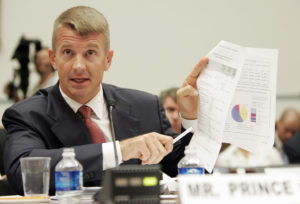

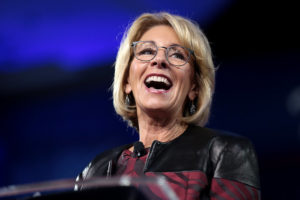
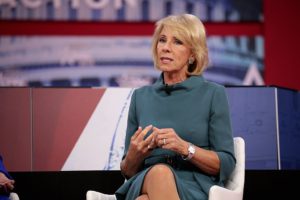
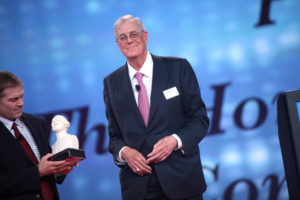
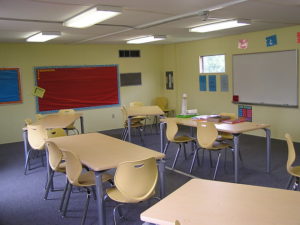
You need to be a supporter to comment.
There are currently no responses to this article.
Be the first to respond.